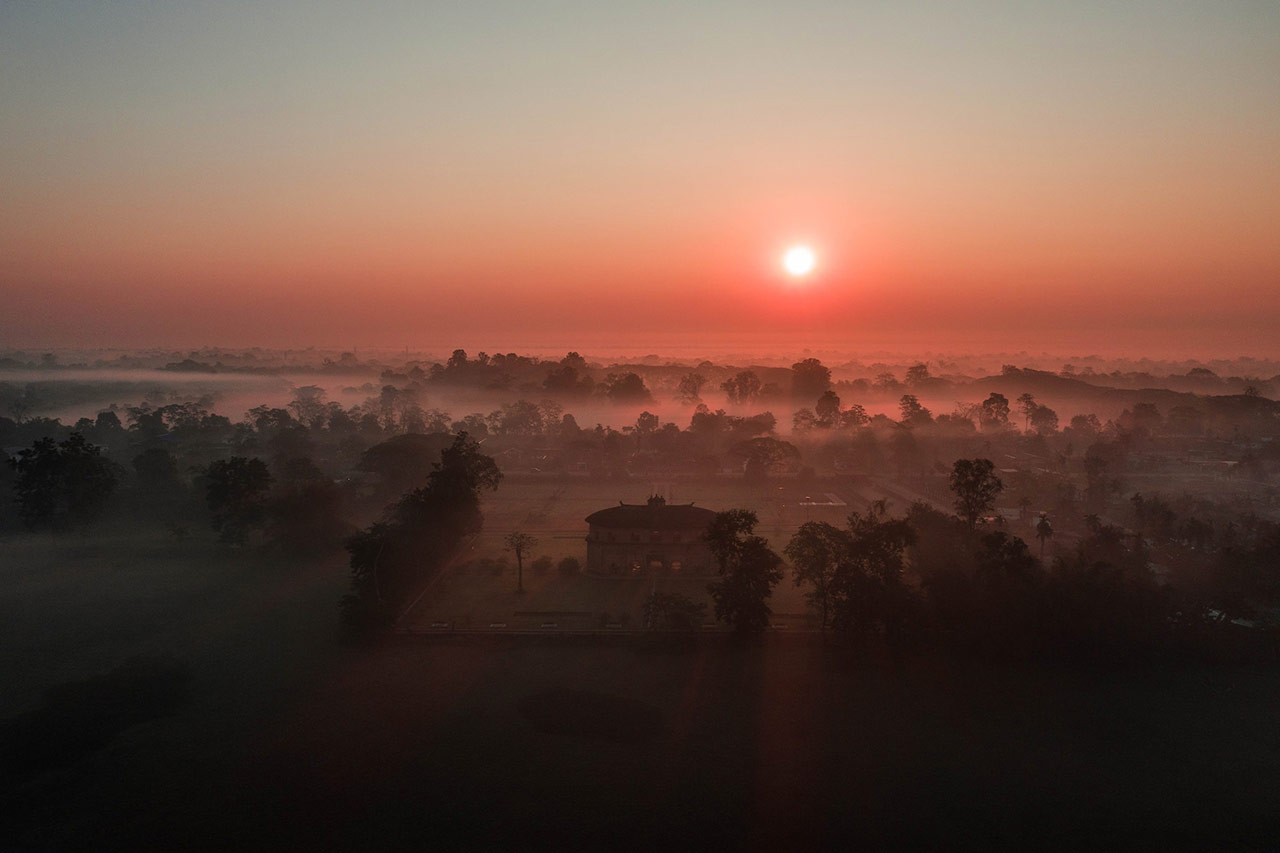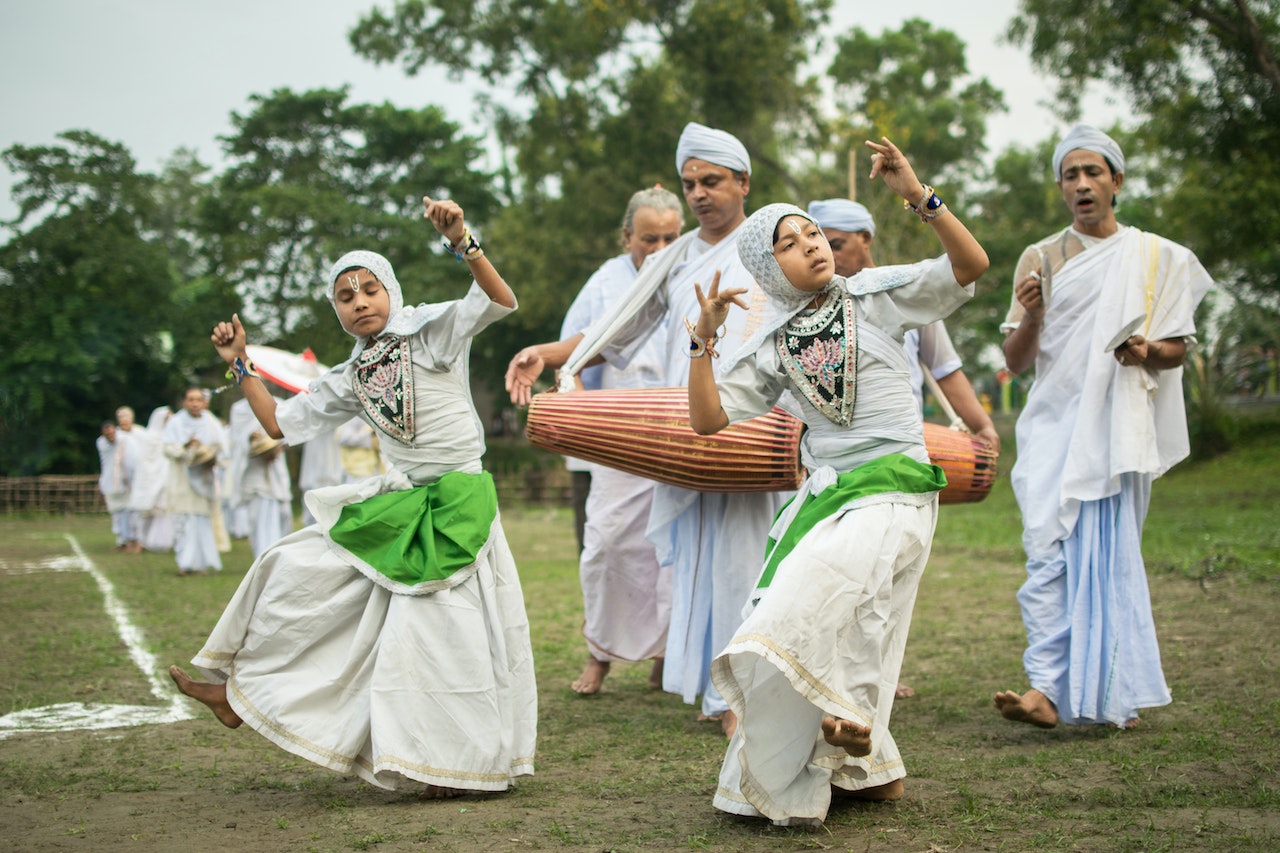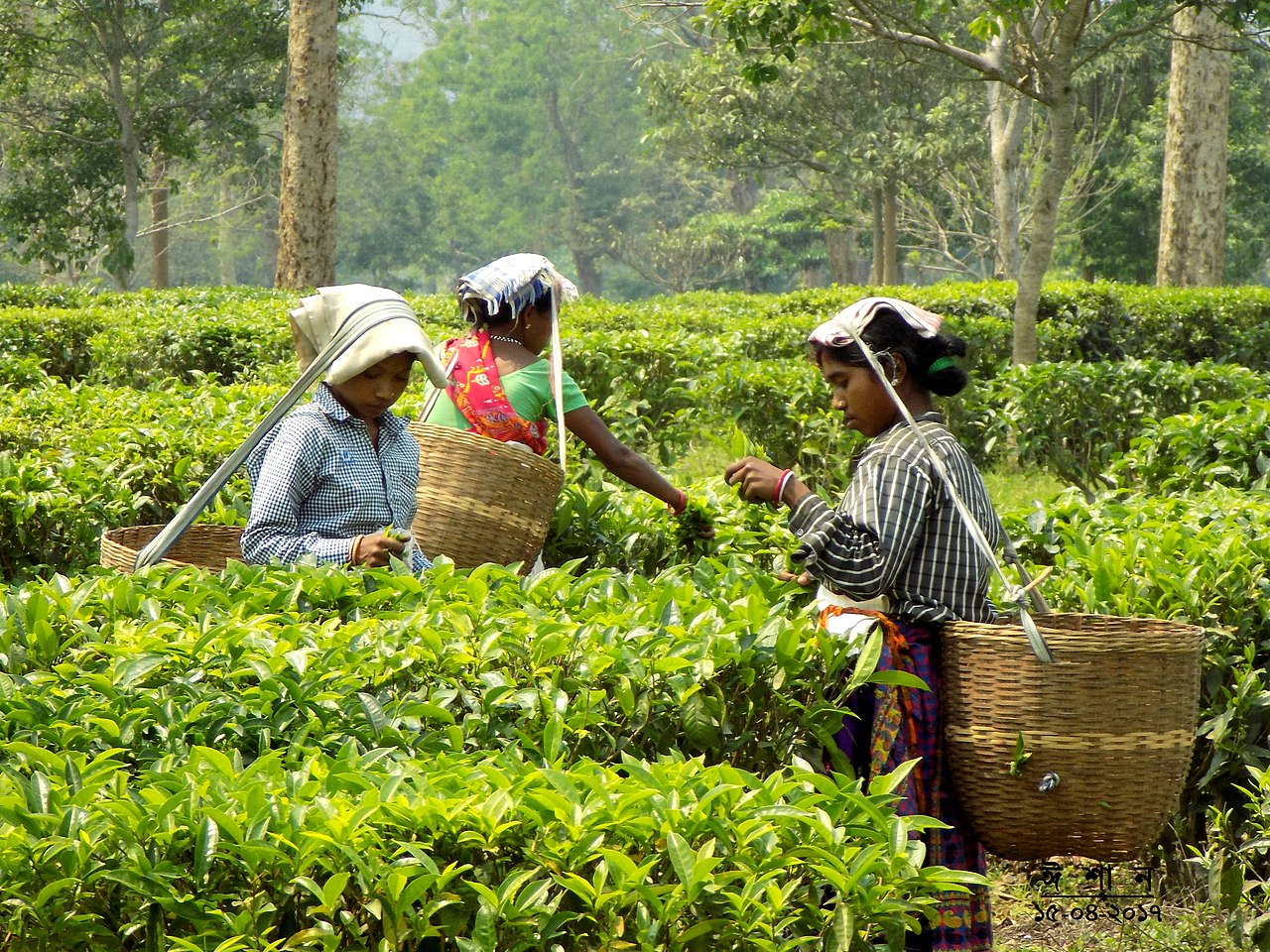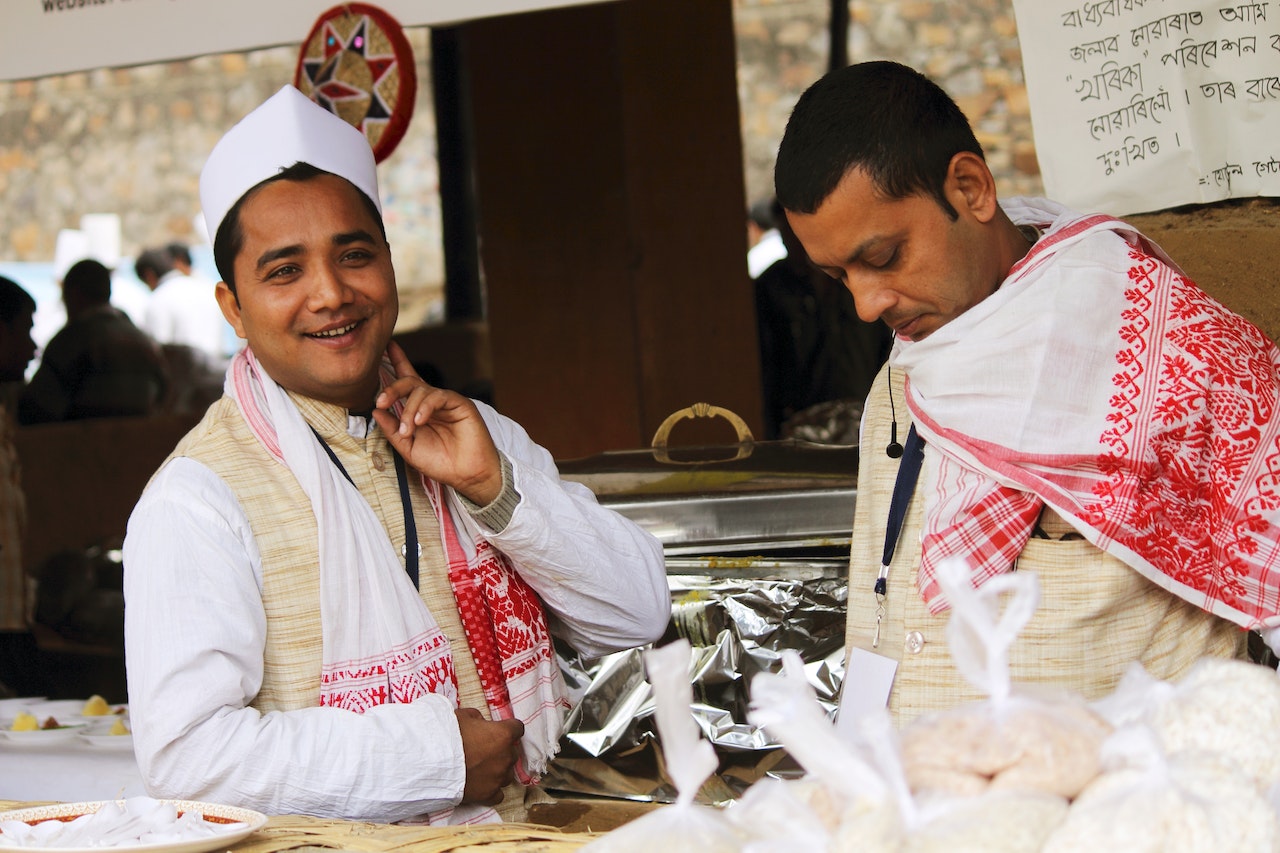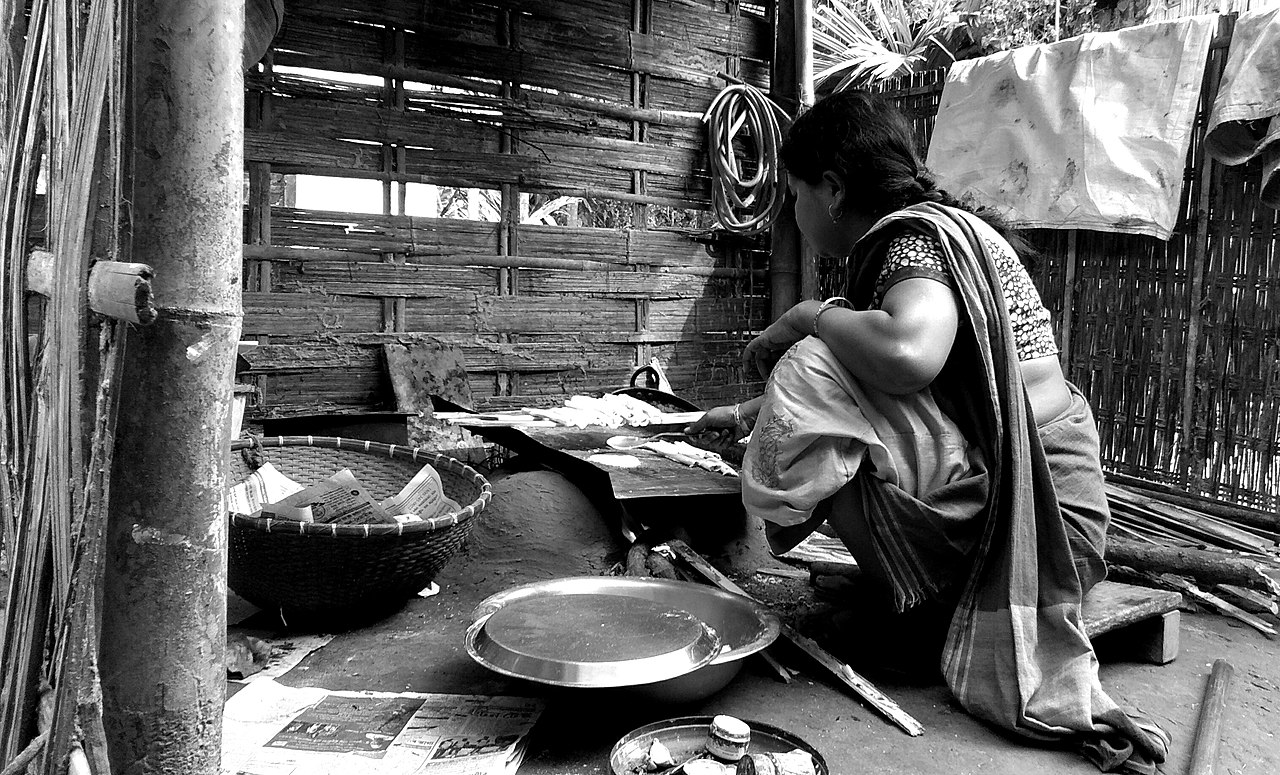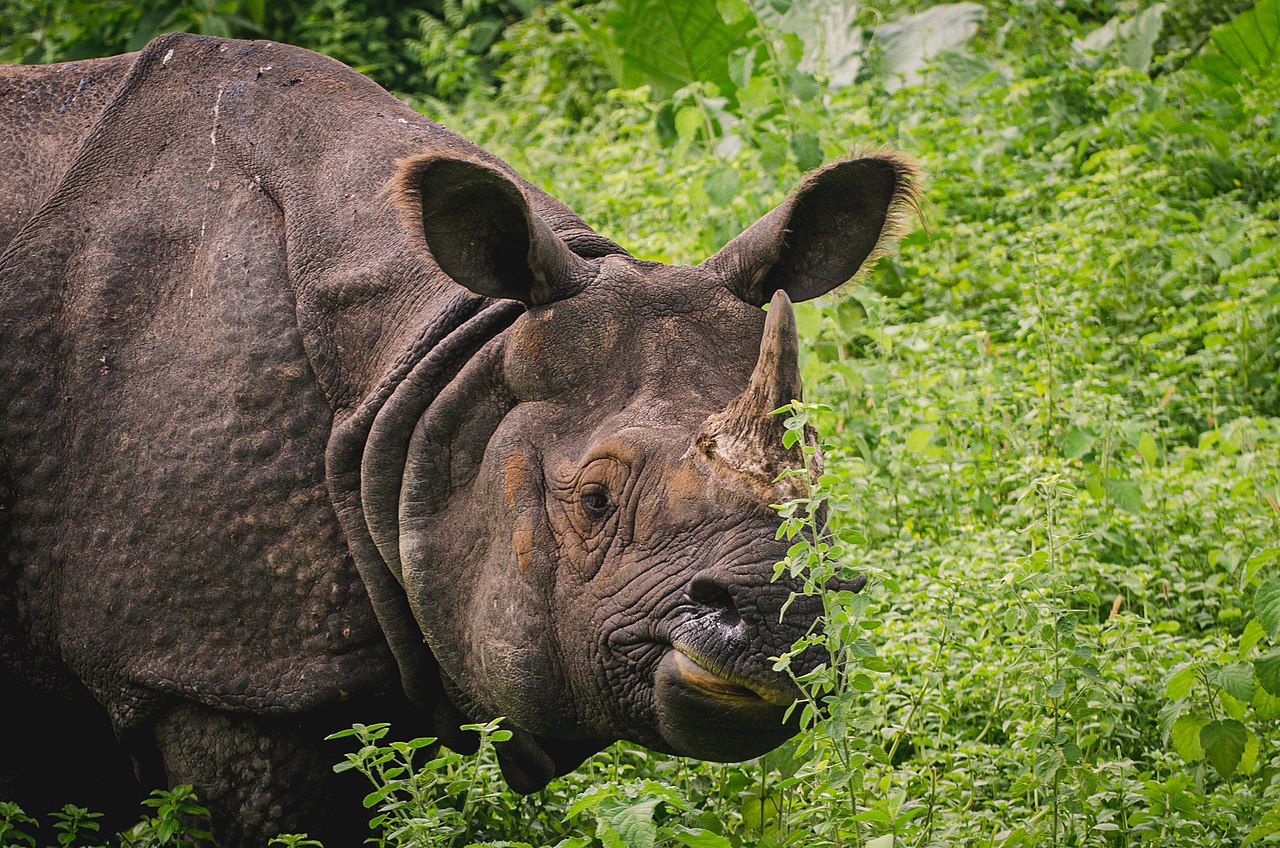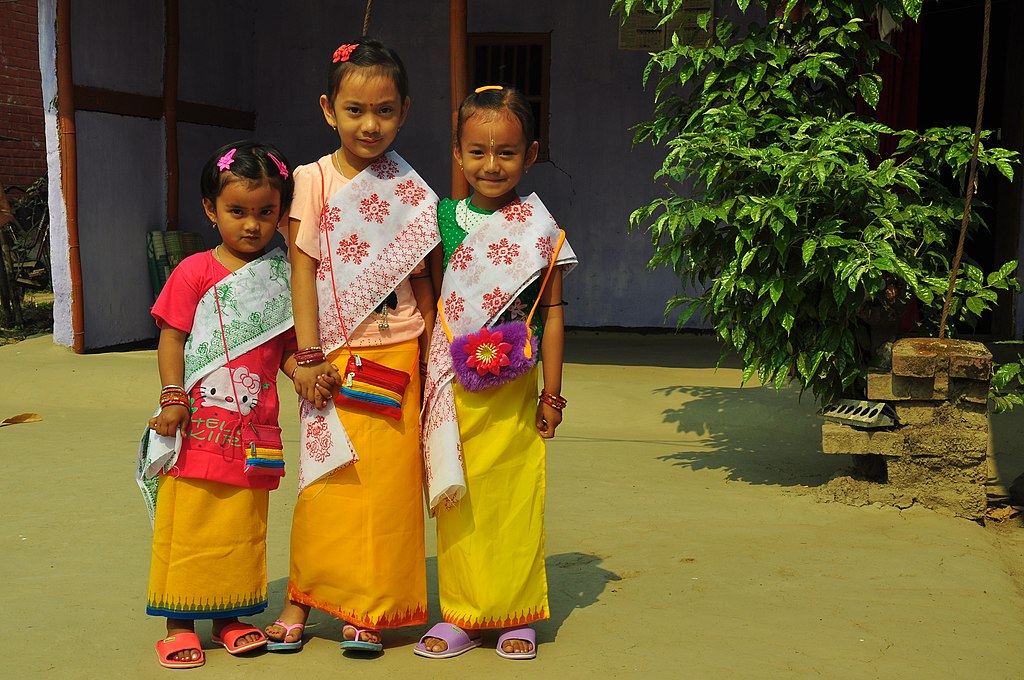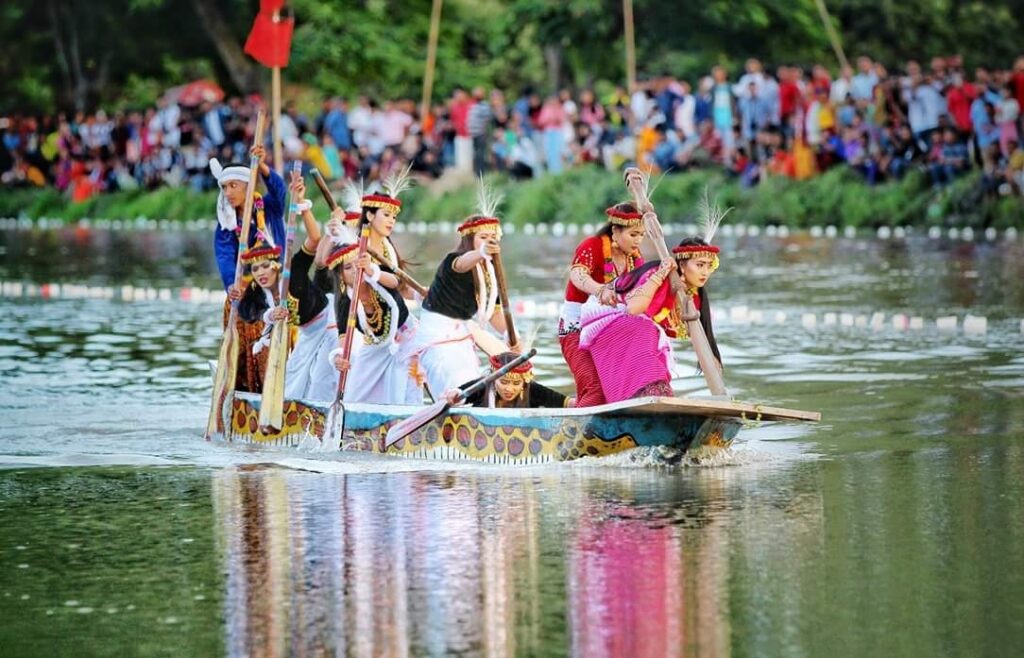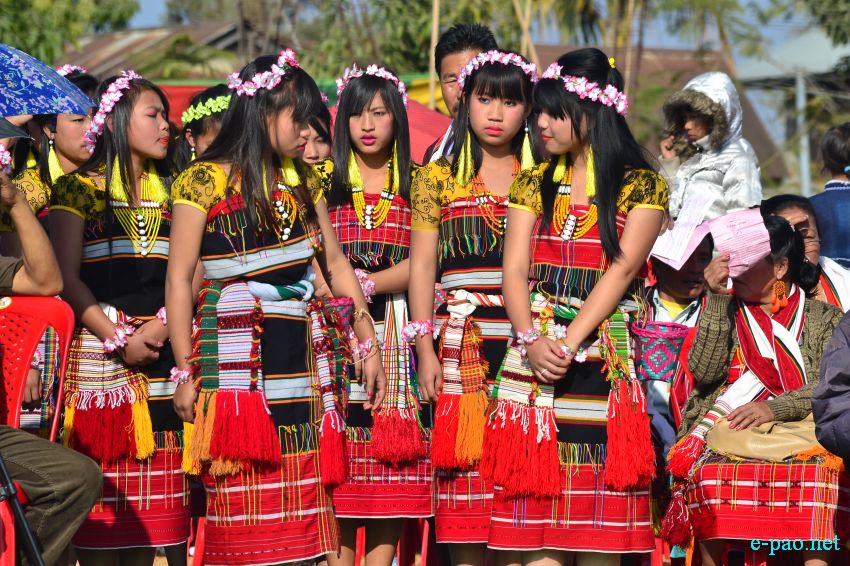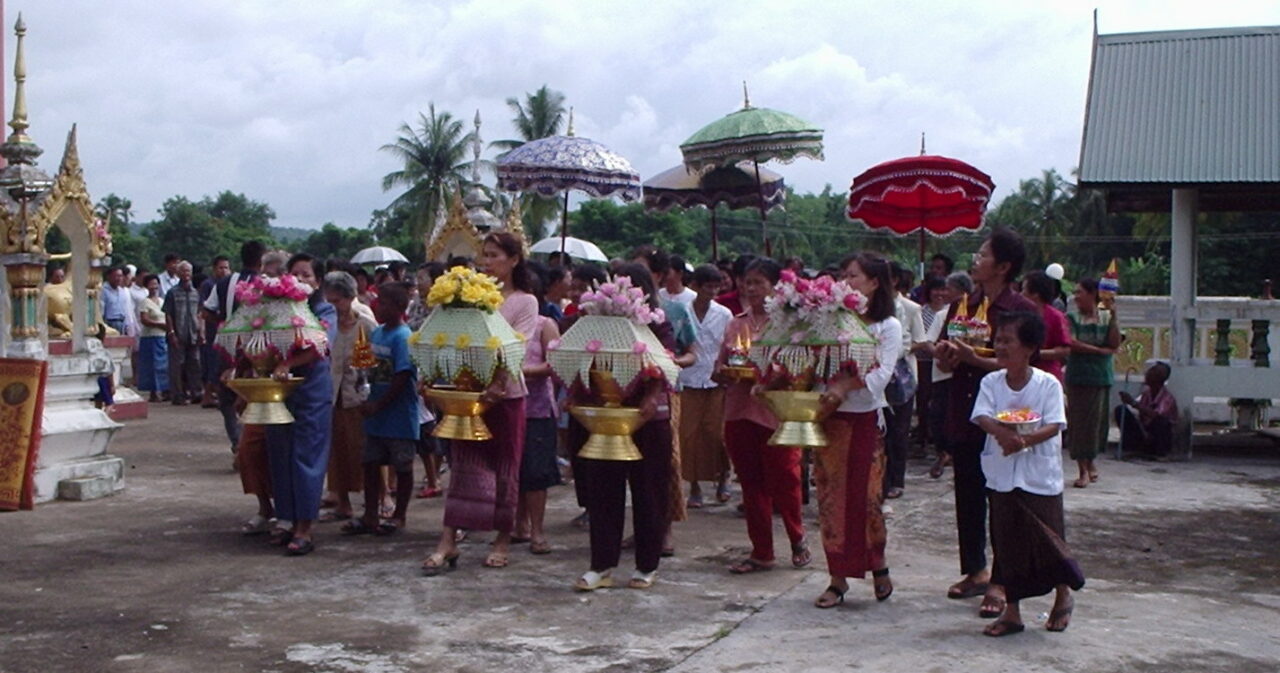
The 14th edition of the India Art Fair which took place at the NSIC Exhibition Ground in Okhla, with 85 exhibitors, including 71 galleries and 14 institutes came to an end on 12th February 2023. The exhibits on display are a diverse mix of modern, contemporary, and digital art. The 4-day exhibition was believed to be the “most ambitious edition” to date. The India Art Fair this year places a special emphasis on a unique fusion of art and technology, featuring an expanded Studio showcasing its “Digital Artist in Residence” program. Art enthusiasts, art experts, and curators from all over the globe came to the event to learn what makes the exhibition unique for them. Shruti, one of the art enthusiasts, was happy to share her interest in art. “My love for the arts and the inquisitiveness for the artist’s thought behind every stroke has been there since a very young age. I am more than amused to see all these masterpieces. They make me happy and emotional at the same time. I see myself in some of these paintings.”
1. Sunil Padwal

Every time he performs, Padwal attempts something fresh. He will also venture into unexplored territory with this exhibit: huge prints. He intends to provide visual intrigue by contrasting chairs with massive posters. One of the fair volunteers states that “The piece depicts a hybrid mask. We all are a mixture of entities in this ongoing pop culture. The collection of items at Padwal’s workshop, which includes vintage books and diaries as well as an old lamp, provide inspiration.”
2. Maya Mima

The painting by young artist Maya Mima was made during the pandemic. It is a beautiful representation of how the world survived the pandemic inside out. Made on rice paper with water colour, it depicts the contrasts between the alarming ambulances on the streets and the unified family having dinner at home.
3. The Long Goodbye by Madhuban Mitra and Manas Bhattacharya

Madhuban Mitra and Manas Bhattacharya are artists due based in Kolkata. The artists photograph films as pre-existing representations of the visible world rather than taking photographs of the real environment. The photos span the history of cinema around the world from the 20th century and are from fiction films, documentaries, propaganda, and experimental films. The long goodbye contrasts the faces of numerous well-known actors from throughout the world with those of faceless, everyday, ordinary people.
4. Industrial Photographs by Madan Mahatta

Born in Srinagar, Madan Mahatta learned photography in the early 1950’s. While the West had industrialized when photography came into being, the industrializing young India was barely documented by a few photographers. This presentation made in the 1970’s, draws attention to the lesser known industrial work. Mahatta’s work drew attention to the rapidly developing steel, textile, and paper industries in the post independence era.
5. Meet Me In The Garden by Farheen Fatima

Meet Me In The Garden is an ongoing series that emerged out of Farheen Fatima’s interest in the Chandigarh gardens. This is a beautiful blend of photography and painting. In her work, she engages in a narrative that is themed around nostalgia and the complexities that govern the human longing for tenderness. The images depict her personal relationship with nature.
6. Untitled by Vivan Sundaram

This untitled piece by Vivan Sundaram, presents abstracted images of his own back, carrying translated inscriptions from the poems of the 14th century Sufi mystic Lal Ded. Using the body as a metaphor, he confronts viewers with the backbone as a symbol of vulnerability in the battle of aging.
7. Sunset in Surat (1929) by Atul Dodiya

Dodiya has been drawn towards Mahatma Gandhi for over twenty five years and so are his artistic creations. Sunset in Surat (1929) shows a public meeting held in Surat in 1929 in the presence of Gandhi and Sardar Patel residing on the dais amidst the rising momentum of the freedom struggle.
8. Life, Death, and Miscellaneous by Gigi Scaria

This is a bronze art of 25 pieces that revolves around various pitiful parts of life such as love, hate, society, sex, industry, food, and fire. Gigi’s work explores issues of urban development, in relation to migration, economic development, and urban architecture. He also has a keen interest in the quality of social space in drastically changing urban environments.
9. Ancient Steps by Mayadhara Sahu

The artist hails from Bhubaneshwar and is greatly influenced by the temple architecture of Odisha. The work is made by cutting wooden pieces and handcrafting them. The 3D pillars and Garbhgriha give positive vibes to the worshiper.
10. Masquerade: An Endless Drama by Avijit Dutta

Avijit Dutta’s latest body of work, titled “Masquerade: An Endless Drama,” was presented by the Kalakriti Art Gallery from Hyderabad. He employs tempera to consider how many scripts and characters interact in real life, reflecting on the theatricality of existence. The curatorial Note describes the basis of this group of artworks as “Creative liberty and idea notes, fact and fiction, love and false affection, class and mass are engaged in an unseen tug of war. Truth is lost in this swirling mix of pretense and projected reality.”
11. Hair And Her by Rohit Chawla And Swati Bhattacharya

The “Hair and Her” exhibit by Rohit Chawla and Swati Bhattacharya sparked discussion about women’s hair-cutting as a form of defiance against men who try to dominate them. Additionally, the installation had a glass cabinet where visitors can drop their freshly cut hair.
12. Industrial Photographs by Ahmed Ali

This series is a small section from Ahmed Ali’s industrial work which includes photographs shot at various factories from 1949-78. Ali decided to make a career in photography after college. His first professional assignment was of choice for all the Tata Enterprises, for which he traveled to parts of India. Ahmed Ali through his extensive oeuvre became the pioneer of industrial and photography in India.
13. Uma’s Mother by Atul Dodiya

Paintings by Atul Dodiya include well-known iconic characters in his recognisable realistic manner.The series was inspired by viewing and rewatching movies during the pandemic’s lockdown year. Dodiya has made references to cinema since 1995, but in this work, he examines extensively the sets of a variety of commercial and independent films by directors like Hrishikesh Mukherjee and Satyajit Ray. Dodiya took a closer look at the set pieces, including lamps, vases, phones, picture frames, art deco furniture, fake antiques, and floors that might have had paper applied to them to create a black-and-white grid. As he watched these movies intently, Dodiya started to capture his own decisive moment—each of these meticulously selected “frozen moments.”
14. Mirror Mirror On The Wall by Tapasya Gupta

Tapasya Gupta with her vivid imagination and ability to convert that imagination into reality has produced remarkable sculptures. She uses glass, metal, driftwood and stone in her sculptures. Her pieces approach the concept of destiny with a wry sense of humour that tickles the funny bone but strikes at the soul.
15. Folk Art


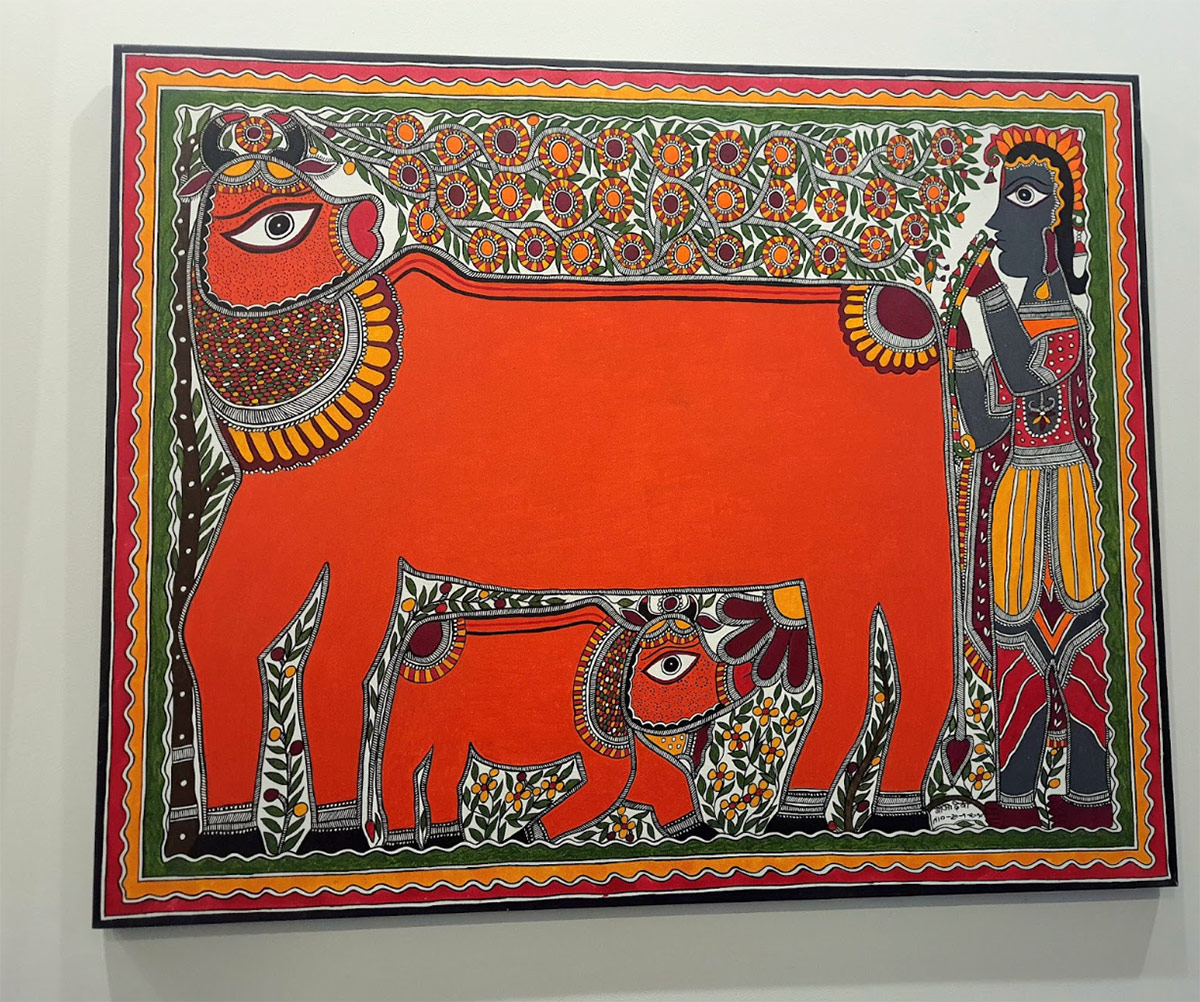
This section celebrates the living traditions and shows 3 important artists Jangrah Singh Shyam, Baua Devi and Bhuri Devi. This show juxtaposes 2 important Padma Shri Awardees in the male dominated art world.
16. The World Sits On My Toenail

Vishwaroopa by Bhajju Shyam, Manjunath Kamath And Santosh Kumar Das – Vishvaroopa is considered as the supreme form of Lord Vishnu. In this form, the whole universe is considered to be contained inside of him. The three artists together have re-imagined all the conceptions and united Vishvaroopa with nature as a central deity.
17. Feet by Gurdeep Brar

He always said his feet were killing him, but nobody believed him – Gurdeep Brar
18. Log Kya Kahenge by Mira Felicia Malhotra

Also known as Kohla, this designer creates illustrations with pop culture and feminist themes. It is a blend of Digital Print on canvas with Augmented Reality technology. Scanning the portraits with iPad Pro, it reveals the complex conflicts that often go unseen in traditional family structures.
19. Lost Stories by Shivani Aggarwal

Five wooden newspapers are on display at the Studio Art booth as part of Shivani Aggarwal’s project Lost Stories—Time and Transformation, which examines the fleeting nature of news, the concept of preserved time, and attempts at modest radical change by everyday people.
20 . The fair displayed a range of artworks from modern to contemporary to digital.






